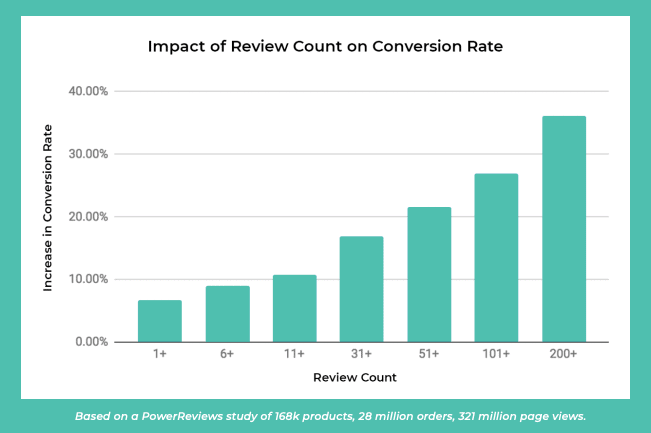With stores not open to the public, our shopping behaviors have been completely disrupted. As widely reported, ecommerce has become the core channel for consumption. For many brands, it’s the one key aspect of their business that’s going well.
Many are looking to pivot on this COVID-19 ecommerce phenomenon to pave a path for growth. Read on to learn why building on your ecommerce success via a targeted customer engagement strategy can sow the seeds for long-term revenue growth.
A new Global Shopping Index report published by Salesforce cites some pretty unprecedented digital commerce statistics. But then again, these are completely unprecedented times.
The number of unique digital shoppers rose 40% year-over-year, caused by this dramatic shift we’ve all experienced in consumer behavior from physical to digital browsing and buying. Digital shoppers drove a 20% revenue growth in Q1 2020, compared to 12% in Q1 2019.
Many brands are reporting increased order volumes in line with what they only usually only see during the holiday shopping season. Our own research backs this up conclusively, and shows brands are experiencing increased page view and purchase volumes.
As some States begin to reopen, most Americans remain uneasy about venturing out, with one study showing 67% are uncomfortable going into a retail store. Given this ambivalence, expect ecommerce to remain robust for the foreseeable future.
‘Don’t Rest on Your Laurels’
Brands have an incredible opportunity to continue this momentum by driving even more digital engagement – both in acquiring new customers and nurturing their existing/loyal customer base.
Matt Powell, Vice President and Senior Industry Advisor at the NPD Group underscores this opportunity, “Ecommerce has been a lifeline for many brands and retailers. More and more customers are shopping online, and for products they likely would have never bought pre-pandemic. I believe we can expect consumers to continue moving online as we ease our way out of the crisis. Now is the time for brands and retailers to double down on their online business. ‘Digital first’ must be the mantra of retail now. Don’t rest on your laurels, as there is always room for improvement. Make your website the best it can be.”
During this time when consumers desperately need to feel connected and assured that a brand can be trusted with their business, some are leveraging customer content to deliver the improvements Powell talks about. Customer stories offer powerful validation that build trust and authenticity by highlighting how consumers are engaging with your brand and the products you offer.
Most importantly, they are proven to help drive increased site traffic and purchases. Even a single product review can make a big difference to your bottom line.
According to our extensive ratings and review data (we analyzed 168k product pages, 28 million orders and 321 million page views), we found that the more reviews displayed for a product, the higher the conversion rate. But, even a small volume of reviews has an impact. To illustrate this point, a jump from zero to one customer review results in a 7% increase in conversion levels for that product on average. This increases steadily until you hit 50 reviews, which we consider the sweet spot. At this point, the lift in conversion rate is 21% on average… Pretty impactful numbers!

Pro Tip: Focus Your Customer Content Strategy on Mitigating Returns
Brands experiencing a high volume of ecommerce orders can typically expect at least some returns. Product returns have always been the achilles heel for retailers, and even more so now in the COVID-19 wake of shuttered storefronts and economic uncertainty.
Returns seriously erode revenues. In one study, Boston University researchers found returns cost manufacturers and retailers as much as $100 billion annually or 3.8% of revenue.
But the same study found that customer content – or more specifically, product reviews – help consumers make better purchase decisions and lead to fewer product returns. Bottom line: online product reviews are critical to enhancing strategic competitiveness, boosting revenue and reducing costs.
Why? Customer content answers questions upfront, supporting consumers’ efforts to select a product that fits their specific need. Think about it: if – as a browser – you’re faced with a product page that includes product images submitted by customers and maybe even Q&A-type content, you are far more likely to obtain the answers to any questions you have (i.e. around issues ranging from size/fit to color and plug any unconsidered gaps in the product description), while also demonstrating relatability – all in a uniquely scalable and authentic way.
This does more than sell merchandise, it can help ensure the product – once it leaves the distribution center – doesn’t come back via the returns channel.
Steal These Customer Engagement Best Practices
Over the years, PowerReviews has worked with leading brands to help them formulate killer customer engagement strategies to drive high-octane ecommerce growth. I’ve taken the liberty of making a list of these — in some cases, noting particular COVID-19 implications that make these especially relevant right now.
1. Send a follow-up email after an order is placed urging shoppers to review their purchases.
This proactive strategy generates up to 90% of review collection. Formulating your email is important. Think short and simple and be clear and concise in stating your review ask.
2. Be purposeful to collect content that is specific and actionable.
By asking for specifics, you can gather vital user information to help answer real buyer needs, such as what is the size and fit of this item? (60% of all returns can be attributed to fit issues), and, what are the best uses of this item? You should be aiming to extract existing thoughts rather than influence the content. Your typical reviewer is not a professional writer and may not even know what average customers look for. So make the writing a review process quick and easy with prepopulated tabs.
3. Focus on images.
They say a picture is worth a thousand words. When it comes to reviews, it could be worth a thousand orders. Images are particularly critical for product segments such as fashion and beauty as consumers don’t have ready access to stores where they can try things on and test things out. Consumers are scanning images to assess questions such as: Will this Perfect Passion Pink lipstick look good on me? Seeing the image of another individual with the same hair and skin color wearing this shade of lipstick (and demonstrating this shade of pink is on point) – for example – is seriously impactful. Formulate your review to ask for an image first and keep in mind the opportunity to repurpose or cross-post images by curating from social media platforms such as Instagram. These offer a treasure trove of visual content that can be collected and integrated into product pages to provide scale, plug any product description gaps and establish the buyer confidence necessary for customers to hit the “buy” button.
4. Spend extra time connecting with your followers and posting on your social media outlets.
In the post-COVID-19 era, consumers are online more than ever. Reports are flooding in regarding skyrocketing screen time in light of social distancing measures, with individuals reporting increases in screen time ranging from 35 to 68%. Take advantage of this opportunity by engaging with the community you’ve built to ask for reviews.
5. Provide the ability for users to ask questions and provide answers on your site.
Satisfy your site visitors by giving them the information they want and need without having to navigate to other pages on your site. Providing answers to consumers’ questions builds trust and removes barriers to purchase while improving SEO. On average, when a product goes from displaying no answers to at least one answer, brands and retailers see an 88% lift in traffic and an 82% lift in conversion for that product. Anecdotal evidence from many of our customers indicates that Q&A content is playing an important role during the shifting COVID-19 ecommerce landscape. For example, Tim Lakin, ecommerce Merchandising Manager at Skechers, told us: “I am definitely seeing an increase in customer reviews and questions indicating a lot of customers are shopping online who would not normally be doing so – even to the point where a customer may not know their own shoe size and would rely heavily on review information. Naturally, we want to accommodate those customers since our website is now taking the place of our retail stores in many states, and the store associates and in-store experience as well.”
6. Identify and close review sharing gaps.
Sharing the customer content you collect on your brand with retailers makes it easier for them to sell your product. This also helps with SEO, making your products easier to find thereby increasing impressions and traffic. To assess the best opportunities, look at key categories that are receiving a high volume of traffic but which are not deemed “essential” items. So think self-care, home improvement, etc., These represent “killer COVID-19 categories” where reviews and content can enhance sales and SEO.
7. Consider a sampling strategy.
One ultra-effective way to solicit customer feedback is by giving consumers the opportunity to experience a product in exchange for their input, whether through a review or on social media. PowerReviews clients typically experience an 85% response rate to sampling campaigns. Recently, however, brands have experienced issues with sample product availability, fulfillment issues, and shipping delays. So be sure to understand what, if any, COVID-19 constraints could impact your sampling campaign execution. But I can’t stress enough how the conditions caused by the pandemic are uniquely suited to sampling campaigns. Although times are rough, people are looking for things to do. Experimenting with a new (free) product may provide some welcome escapism.
8. Show empathy.
We are living in unprecedented times and now more than ever, we appreciate the connections with others – precisely because we can’t physically interact with one another. Brands have an opportunity to step up. As RSR Research Industry Analyst Paula Rosenblum has said, “It’s time to show the world what we are made of,” noting, “consumers won’t forget.” Responding to reviews or via social media to build and nurture your customer community can have a very strong and positive impact. As well, ask yourself what you can offer to help your customers at this time. Maybe that’s offering free shipping, maybe it’s a virtual try-on utility or double loyalty points.
Is your ecommerce/digital team employing any of the above customer engagement strategies? If you are a PowerReviews customer, reach out to your Customer Success Manager to discuss the best strategies to leverage our solution to achieve your objectives. If you’re not a PowerReviews customer, we’d love to hear from you.




